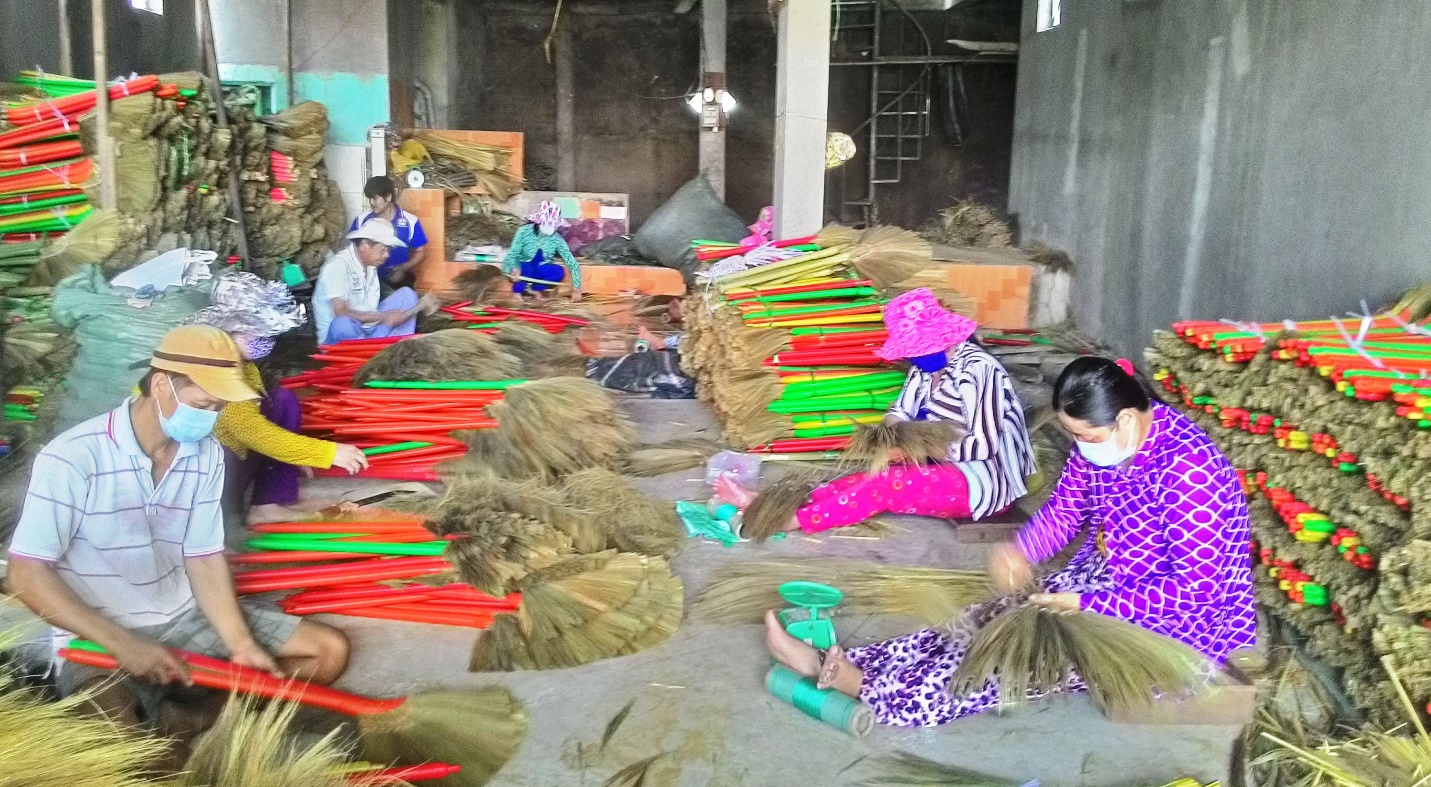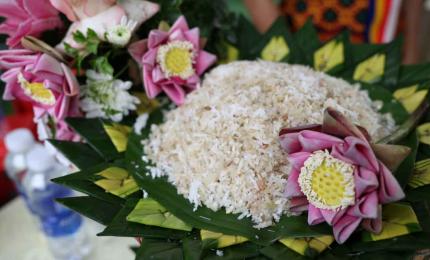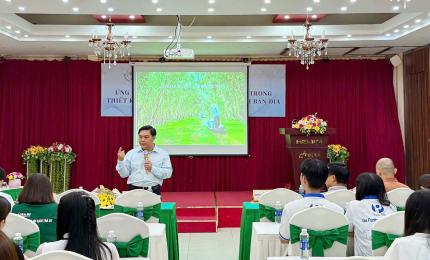(AG Provincial E-Portal) - In the past, An Giang has implemented and promulgated numerous mechanisms and policies in order to preserve and develop rural trades, craft villages, and traditional craft villages. This has contributed to the sustainable socio-economic development of rural areas.

An Giang is renowned for its numerous traditional craft villages and villages that have been recognized by the Provincial People's Committee as meeting the "Criteria for handicraft villages in An Giang province." These villages include Binh Duc incense, My Hoa fishing hook, and My Khanh rice paper (Long Xuyen city), Cham Chau Phong brocade weaving (Tan Chau town), An Chau rat trap (Chau Thanh district), a bundle of coconut brooms (Thoai Son district), Khmer Van Giao brocade weaving (Tinh Bien town), production and processing of Chau Lang jaggery (Tri Ton district), canoes building My Hiep, Cho Thu carpentry (Cho Moi district), and forging Phu My, Phu My puff pastry (Phu Tan district). Consequently, in order to preserve and advance rural industries, traditional craft villages and craft villages specialize in the locality's specialty, characteristic, and key products. The An Giang Provincial People's Committee issued Plan No. 448/KH-UBND on June 5, 2023, which is titled "Developing rural trades, preserving and developing traditional craft villages and craft villages in the province in the period of 2023–2025."
In particular, the province will facilitate the dissemination and propagation of policies and mechanisms that promote the development of rural industries and craft villages in conjunction with ecological environmental protection. This will create an environment in which households and establishments that operate in the rural industry sector can benefit from preferential policies that are in accordance with current regulations. Review and coordinate the development of rural trades in conjunction with local socio-economic development planning; establish a land fund to consolidate agricultural, forestry, and fishery processing establishments to ensure compliance with legal requirements. At the same time, continue to execute trade promotion initiatives and establish connections between product consumption markets; conduct research and identify typical craft villages and products to establish brands; organize participation in rural trade and craft village fairs to disseminate, promote, and connect product consumption to domestic and international markets. Encourage enterprises to participate in training and support job creation for rural workers; effectively implement the vocational training scheme for rural workers, with a focus on skill training in craft villages and traditional craft villages; establish preferential policies for well-skilled laborers, attract high-quality artisans and workers, and participate in vocational training for individuals.

Furthermore, all levels and sectors implement topics and projects to support the application of science and technology in the development of rural and craft villages. This contributes to the improvement of the competitiveness of products associated with conservation, as well as the increase in production efficiency; encourage, guide, and support trade villages in registering for the establishment and protection of industrial property rights; support the exploitation and development of intellectual property for traditional industries and professions; and promote the cultural identity of rural craft villages and trades in accordance with the science and technology sector policies currently being implemented in the province. Simultaneously, emphasize the application and advancement of science and technology in the production activities of rural industries, with a particular emphasis on the preservation and processing of agricultural products and handicrafts. Implement policies to assist rural establishments and trades in the application of science and technology to product production. Simplify loan procedures to improve the accessibility of establishments, and implement preferential policies on credit capital for rural establishments and industries. The objective is to secure medium- and long-term capital sources for investment in technological innovation, research, and the development of new products. Establish mechanisms and policies to facilitate the access of support capital sources from the state budget to rural industry establishments. Combine the use of capital sources for programs such as the National Target Program for the Construction of a New Countryside and the One Product Per Compound Program to ensure their successful implementation.
The province has achieved numerous positive outcomes as a result of the synchronous implementation of numerous mechanisms and policies to support the conservation and development of rural trades, craft villages, and traditional craft villages. In recent years, numerous carpentry establishments have boldly expanded their production scale and invested in the procurement of modern equipment and machinery in production, such as circular saws, combine planers, lathes, and 3D touchers, in typical carpentry villages in Cho Moi district, where local policies are designed to support the development of craft villages. Simultaneously, prioritize the enhancement of workers' abilities and the perpetual enhancement of designs, thereby enhancing the quality of wood products and satisfying the evolving aesthetic preferences of customers. Mr. Bui Van Tan Tai, a proprietor of a carpentry facility in Long Dien A commune, stated, "My establishment is dedicated to the interior decoration of indoor spaces and the wood industry." The primary customers are localities in the Mekong Delta, and the products are sold to the provinces of Ho Chi Minh City, Dong Nai, and Binh Duong. In recent years, my establishment has increased its investment in machinery, equipment, and wood as a result of the capital support provided by the local government. This has resulted in a greater variety of product designs, an improvement in quality, and a more visually appealing product. Additionally, consumers have purchased a greater number of products than they did previously.
The manual method has been a familiar and integral part of the lives of many people in the production and processing village of Chau Lang Jaggery (Tri Ton district). Nevertheless, the exploitation, production, and refining of jaggery are not only traditional occupations, but they have also been integrated into a typical strength product. In addition to the establishment of craft communities, individuals are also instructed in the exploitation of water, the processing of sugar, and the production of jaggery to guarantee food safety and hygiene. They are provided with capital and machinery for the mining and cooking of sugar. Consequently, assisting the community in the exploitation, refining, and production of jaggery is both compassionate and enhances the quality and quantity of the product. Furthermore, all sectors of the industry provide support for the promotion and development of OCOP products, including sugar, wine, utensils, and nectar, which are all derived from the jaggery tree. This serves as the foundation for assisting individuals in the preservation and maintenance of traditional crafts, as well as in the establishment of a stable family and economy, all of which contribute to the preservation of the unique cultural characteristics of the region.
Author: Dang Phuong
Translator: Kim Thuan



























